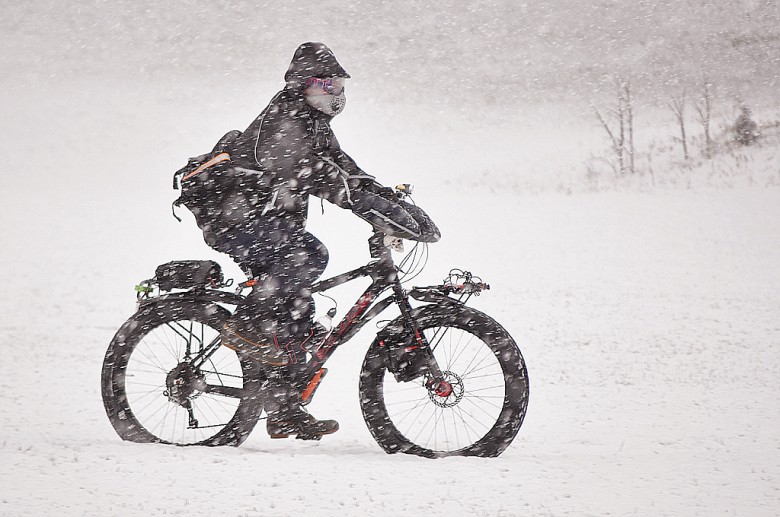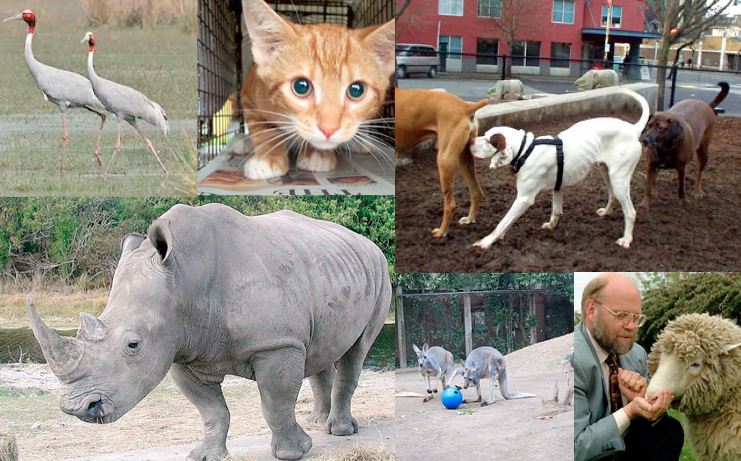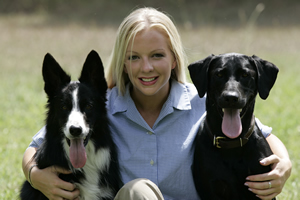Dogs
Hi Mia!
Love the lavender research! Learning that dogs show different behaviors when exposed to different scents could help us prime environments to be associated with particular dog behaviors and moods (you noted that exposure to peppermint and rosemary are associated with activity and barking while exposure to lavender and chamomile bring out resting). At the Horowitz Dog Cognition Lab, we have a new paper coming out soon in Learning and Motivation -- the study included testing the effect of lavender on dogs' food preference. More on that later!
Speaking of being in a calm, more restful state, I know 15 people who recently (hopefully) just entered a period of calm. I teach an Applied Animal Behavior class to Anthrozoology Masters students at Canisius College, and the semester just ended. The Anthrozoology program is a unique hybrid Masters program, hybrid in the sense that at the beginning of each semester, students and teachers meet for 4-days of in-person learning at the Canisius campus in Buffalo, NY. I get to meet the awesome students, although Buffalo in January can be incredibly cold with quickly changing weather. I say this even after spending 4+ years in Madison, WI where people deal with the winter like this. So I guess Canisius is a good place for me.
Digression #1: Anthrozoology Intern
Speaking of Anthrozoology in the online sector, y’all at the Anthrozoology Research Group are looking for an Intern! Applications due by May 24, 2013. Intern responsibilities and requirements listed here.

Digression #2: Hybrid courses
Maybe you are familiar with hybrid degree programs? I first learned about them through one of my mentors, Darcy Luoma, who holds a Masters of Science in Organization Development through Pepperdine University. Darcy is now the Lead instructor for the University of Wisconsin-Madison Professional Life Coaching Certificate, which is a blended-learning certificate program. I follow Darcy on Facebook.
I have been finding my way as a teacher in the hybrid / online academic world and enjoying it -- although a helpful, approachable guide is paramount! Leah MacVie, a learning advocate, instructional designer and cupcake connoisseur, is my go-to person at Canisius College. Leah is a bonafide rockstar in helping online teachers create and manage classes. I follow her on Twitter @leahmacvie and her blog.
Reflecting on Applied Animal Behavior
Anyway, hopefully the students in my Applied Animal Behavior class are having some moments of calm and rest since the class ended. We covered A LOT of material this semester. The journal Applied Animal Behaviour Science reminds us that this field can include hundreds of topics, and then some! Broadly speaking, we covered ethology of domestic animals, pain and stress physiology, needs and preference assessment, abnormal behavior, affective states, welfare, naturalness, ethological approaches to human-animal interactions, species management and reintroductions, and assessing and treating behavior problems.
As the end of the semester neared, we reflected on our 15 weeks of Applied Animal Behavior. Here some of the class’s big take-ways.*
General Reflections
Don’t jump to conclusions
This class has expanded my knowledge of animals in captive environments and practices like reintroductions. It gave me a way to look at these situations from multiple angles and not jump to conclusions.
Sometimes, behavioral problems can be in the eye of the beholder and dependent upon our own lifestyle and expectations. Jumping is not an abnormal behavior for dogs but can be perceived as problematic based on the dog’s home environment.
Explore our assumptions
Dogs have been behaving quite the same for thousands of years. What is different now is our expectations of them. We’ve raised the bar. We bring them into our homes, almost expecting them to act like well-behaved children.
Blogs are awesome!
To complement primary research readings, the class read blog posts. Students noted that posts helped drive home fundamental concepts. In particular, they were fans of:
Jason Goldman of The Thoughtful Animal on the Scientific American blog network. You and I follow him on Twitter @jgold85
Guest speakers rock!
We had three guest speakers this semester, experts in reintroduction and conservation, abnormal behavior and the assessment and management of companion animal behavior challenges.
Cranes
With the help of Bryant Tarr, Curator of Birds, and Anne Lacy, Crane Research Coordinator, we learned all about the International Crane Foundation (ICF)-- particularly the rearing and reintroduction process as well as the challenges that cranes face once out in the world.
Their mission: The ICF works worldwide to conserve cranes and the ecosystems, watersheds, and flyways on which they depend. ICF provides knowledge, leadership, and inspiration to engage people in resolving threats to cranes and their diverse landscapes.
The ICF's excellent short videos give more than a sneak peak into their programs and objectives, including my favorite: costumed biologists.
Abnormal repetitive behaviors
We were also joined by Georgia Mason, the Canada Research Chair in Animal Welfare from the Department of Animal and Poultry Science at the University of Guelph. She reminded students just how complex abnormal repetitive behaviors can be.
"...stereotypies should always be taken seriously as a warning sign of potential suffering, but never used as the sole index of welfare; non-stereotyping or low-stereotyping individuals should not be overlooked or assumed to be faring well..." (Mason & Latham 2004)
Mason is an author of over a hundred publications and the book Stereotypic Animal behavior. In case you don't know, her Lab has a blog!
In the field
Lauren Hays, M.S., ACAAB is an Associate Certified Applied Animal Behaviorist at Austin Canine Consulting. As a practitioner for over 8 years, she discussed the realities of working with companion dogs and their owners. Some challenges include failure to comply with instructions and being
realistic about a dog’s behavioral change prospects. Hays reminded students that dogs have had the same behavioral repertoires for many, many years and that the real difference may lie in our expectations of dogs and the situations in which they find themselves.
That's reflecting on Applied Animal Behavior!
I’m sure you have more sensory enrichment research up your sleave. Do tell!
Cheers!
Julie
Reference
Horowitz, A., Hecht, J., Dedrick, A. (2013, in press). Smelling more or less: Investigating the olfactory experience of the domestic dog. Learning and Motivation.
Mason G., Clubb R., Latham N. & Vickery S. (2007). Why and how should we use environmental enrichment to tackle stereotypic behaviour?, Applied Animal Behaviour Science, 102 (3-4) 163-188. DOI: 10.1016/j.applanim.2006.05.041
Mason, G. J., Latham, N.R. (2004) Can't stop, won't stop: is stereotypy a reliable animal welfare indicator? Animal Welfare, (13) 57-69.
*not direct quotes
© 2013 Julie Hecht
- Pass Me The 'dog Book'
(Source)Hi Mia! So many books. Written about dogs. Most I see at the airport, memoirs of someone’s ‘very special relationship’ with a 'very special' dog, another about dogs ‘racing in the rain,’ (seems like it would be a pretty short...
- Scientific Approaches To Enriching The Lives Of Sanctuary Wolves And Wolf-dog “hybrids”
Spirit initiating play with SampsonHi Julie and Mia, I wanted to update you on some unique but exciting research that I conducted while working toward my Ph.D. at the University of Florida’s Canine Cognition and Behavior Lab. This particular research...
- Stop To Smell The Flowers. Especially Lavender.
(source)Hi Julie, WOW! Dogs in clothes. Corgis in bikinis at the beach. Greyhounds in onesies. We people do some weird things to our canine friends, no?! I'm pretty sure I wouldn't enjoy being dressed up in a padded...
- So Much Dog To Talk About. All The Time In The World!
(source)Hi Mia, Yowzer!! We have so much to talk about! Dogs eating poop, welfare assessment, behavioural needs, enrichment and the “guilty look” are only the beginning! Speaking of which, I’m sure you have at least 7,000 more words...
- What Does A Veterinary Behaviorist Do?
By Linda Cole Pets find themselves in animal shelters for a number of reasons, but too often, they're surrendered because of behavioral problems their owner couldn't or wouldn't deal with. Qualified veterinarians are applying their specialized...
Dogs
Reflecting on Applied Animal Behavior
 |
| Time for reflection (By Wieselblitz) |
Love the lavender research! Learning that dogs show different behaviors when exposed to different scents could help us prime environments to be associated with particular dog behaviors and moods (you noted that exposure to peppermint and rosemary are associated with activity and barking while exposure to lavender and chamomile bring out resting). At the Horowitz Dog Cognition Lab, we have a new paper coming out soon in Learning and Motivation -- the study included testing the effect of lavender on dogs' food preference. More on that later!
Speaking of being in a calm, more restful state, I know 15 people who recently (hopefully) just entered a period of calm. I teach an Applied Animal Behavior class to Anthrozoology Masters students at Canisius College, and the semester just ended. The Anthrozoology program is a unique hybrid Masters program, hybrid in the sense that at the beginning of each semester, students and teachers meet for 4-days of in-person learning at the Canisius campus in Buffalo, NY. I get to meet the awesome students, although Buffalo in January can be incredibly cold with quickly changing weather. I say this even after spending 4+ years in Madison, WI where people deal with the winter like this. So I guess Canisius is a good place for me.
 |
| (Just a little bike ride) |
Speaking of Anthrozoology in the online sector, y’all at the Anthrozoology Research Group are looking for an Intern! Applications due by May 24, 2013. Intern responsibilities and requirements listed here.

Digression #2: Hybrid courses
Maybe you are familiar with hybrid degree programs? I first learned about them through one of my mentors, Darcy Luoma, who holds a Masters of Science in Organization Development through Pepperdine University. Darcy is now the Lead instructor for the University of Wisconsin-Madison Professional Life Coaching Certificate, which is a blended-learning certificate program. I follow Darcy on Facebook.
I have been finding my way as a teacher in the hybrid / online academic world and enjoying it -- although a helpful, approachable guide is paramount! Leah MacVie, a learning advocate, instructional designer and cupcake connoisseur, is my go-to person at Canisius College. Leah is a bonafide rockstar in helping online teachers create and manage classes. I follow her on Twitter @leahmacvie and her blog.
Reflecting on Applied Animal Behavior
 |
| Applied Animal Behavior in action |
As the end of the semester neared, we reflected on our 15 weeks of Applied Animal Behavior. Here some of the class’s big take-ways.*
General Reflections
Don’t jump to conclusions
This class has expanded my knowledge of animals in captive environments and practices like reintroductions. It gave me a way to look at these situations from multiple angles and not jump to conclusions.
Sometimes, behavioral problems can be in the eye of the beholder and dependent upon our own lifestyle and expectations. Jumping is not an abnormal behavior for dogs but can be perceived as problematic based on the dog’s home environment.
Explore our assumptions
Dogs have been behaving quite the same for thousands of years. What is different now is our expectations of them. We’ve raised the bar. We bring them into our homes, almost expecting them to act like well-behaved children.
Blogs are awesome!
To complement primary research readings, the class read blog posts. Students noted that posts helped drive home fundamental concepts. In particular, they were fans of:
Jason Goldman of The Thoughtful Animal on the Scientific American blog network. You and I follow him on Twitter @jgold85
- What is Operant Conditioning? (And How Does it Explain Driving Dogs?) with videos!
- What is Classical Conditioning? (And Why Does It Matter?)
- Unveiling the myths of reinforcers and punishers
- Training Aggression? Counter-conditioning a Dog to Blowing in Face (video)
- Temperament and personality
Guest speakers rock!
We had three guest speakers this semester, experts in reintroduction and conservation, abnormal behavior and the assessment and management of companion animal behavior challenges.
Cranes
With the help of Bryant Tarr, Curator of Birds, and Anne Lacy, Crane Research Coordinator, we learned all about the International Crane Foundation (ICF)-- particularly the rearing and reintroduction process as well as the challenges that cranes face once out in the world.
Their mission: The ICF works worldwide to conserve cranes and the ecosystems, watersheds, and flyways on which they depend. ICF provides knowledge, leadership, and inspiration to engage people in resolving threats to cranes and their diverse landscapes.
The ICF's excellent short videos give more than a sneak peak into their programs and objectives, including my favorite: costumed biologists.
 |
| (Raising cranes via ICF) |
 |
| (Source) |
We were also joined by Georgia Mason, the Canada Research Chair in Animal Welfare from the Department of Animal and Poultry Science at the University of Guelph. She reminded students just how complex abnormal repetitive behaviors can be.
"...stereotypies should always be taken seriously as a warning sign of potential suffering, but never used as the sole index of welfare; non-stereotyping or low-stereotyping individuals should not be overlooked or assumed to be faring well..." (Mason & Latham 2004)
Mason is an author of over a hundred publications and the book Stereotypic Animal behavior. In case you don't know, her Lab has a blog!
In the field
Lauren Hays, M.S., ACAAB is an Associate Certified Applied Animal Behaviorist at Austin Canine Consulting. As a practitioner for over 8 years, she discussed the realities of working with companion dogs and their owners. Some challenges include failure to comply with instructions and being
 |
| (Source) |
That's reflecting on Applied Animal Behavior!
I’m sure you have more sensory enrichment research up your sleave. Do tell!
Cheers!
Julie
Reference
Horowitz, A., Hecht, J., Dedrick, A. (2013, in press). Smelling more or less: Investigating the olfactory experience of the domestic dog. Learning and Motivation.
Mason G., Clubb R., Latham N. & Vickery S. (2007). Why and how should we use environmental enrichment to tackle stereotypic behaviour?, Applied Animal Behaviour Science, 102 (3-4) 163-188. DOI: 10.1016/j.applanim.2006.05.041
Mason, G. J., Latham, N.R. (2004) Can't stop, won't stop: is stereotypy a reliable animal welfare indicator? Animal Welfare, (13) 57-69.
*not direct quotes
© 2013 Julie Hecht
- Pass Me The 'dog Book'
(Source)Hi Mia! So many books. Written about dogs. Most I see at the airport, memoirs of someone’s ‘very special relationship’ with a 'very special' dog, another about dogs ‘racing in the rain,’ (seems like it would be a pretty short...
- Scientific Approaches To Enriching The Lives Of Sanctuary Wolves And Wolf-dog “hybrids”
Spirit initiating play with SampsonHi Julie and Mia, I wanted to update you on some unique but exciting research that I conducted while working toward my Ph.D. at the University of Florida’s Canine Cognition and Behavior Lab. This particular research...
- Stop To Smell The Flowers. Especially Lavender.
(source)Hi Julie, WOW! Dogs in clothes. Corgis in bikinis at the beach. Greyhounds in onesies. We people do some weird things to our canine friends, no?! I'm pretty sure I wouldn't enjoy being dressed up in a padded...
- So Much Dog To Talk About. All The Time In The World!
(source)Hi Mia, Yowzer!! We have so much to talk about! Dogs eating poop, welfare assessment, behavioural needs, enrichment and the “guilty look” are only the beginning! Speaking of which, I’m sure you have at least 7,000 more words...
- What Does A Veterinary Behaviorist Do?
By Linda Cole Pets find themselves in animal shelters for a number of reasons, but too often, they're surrendered because of behavioral problems their owner couldn't or wouldn't deal with. Qualified veterinarians are applying their specialized...
